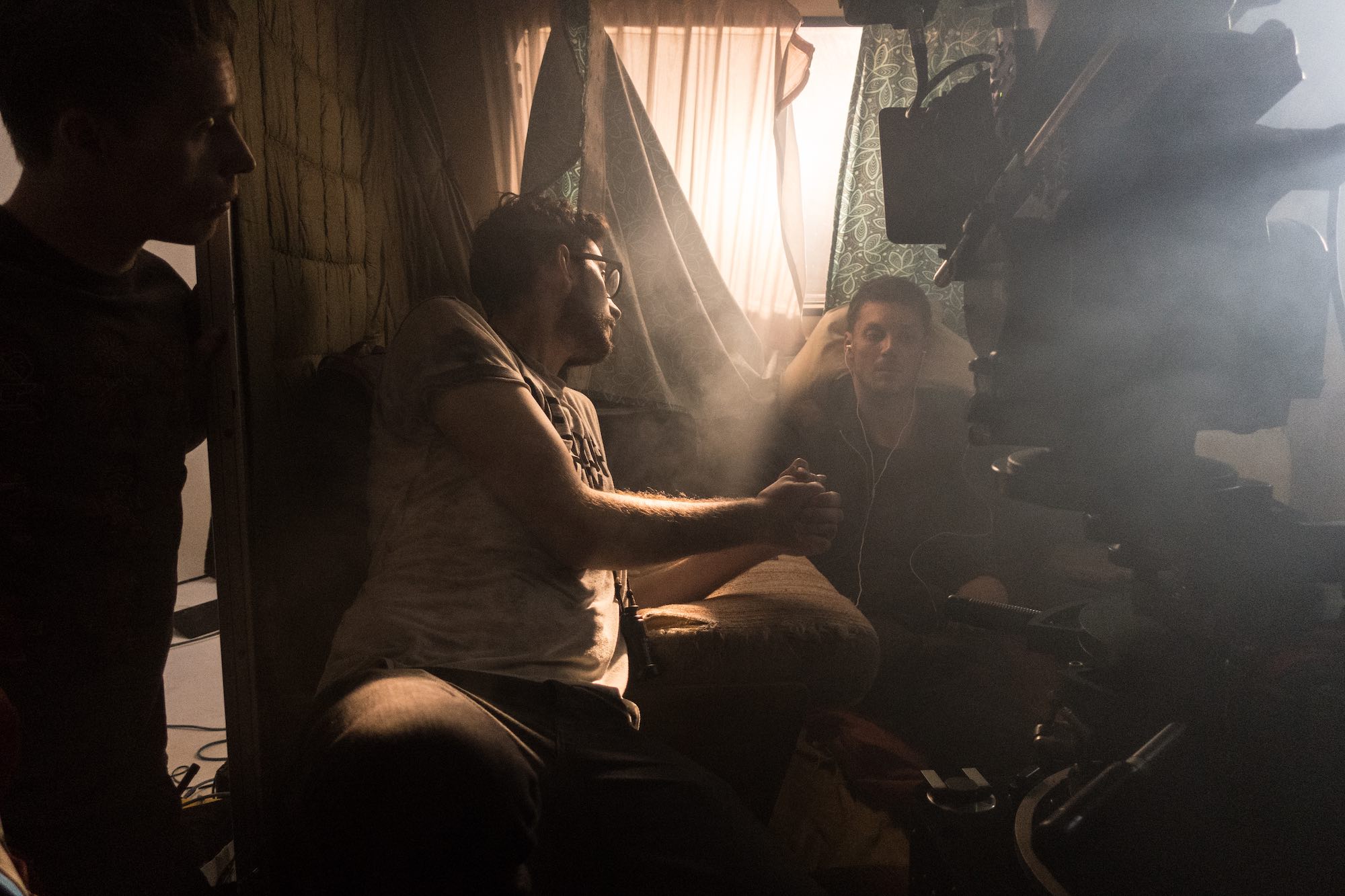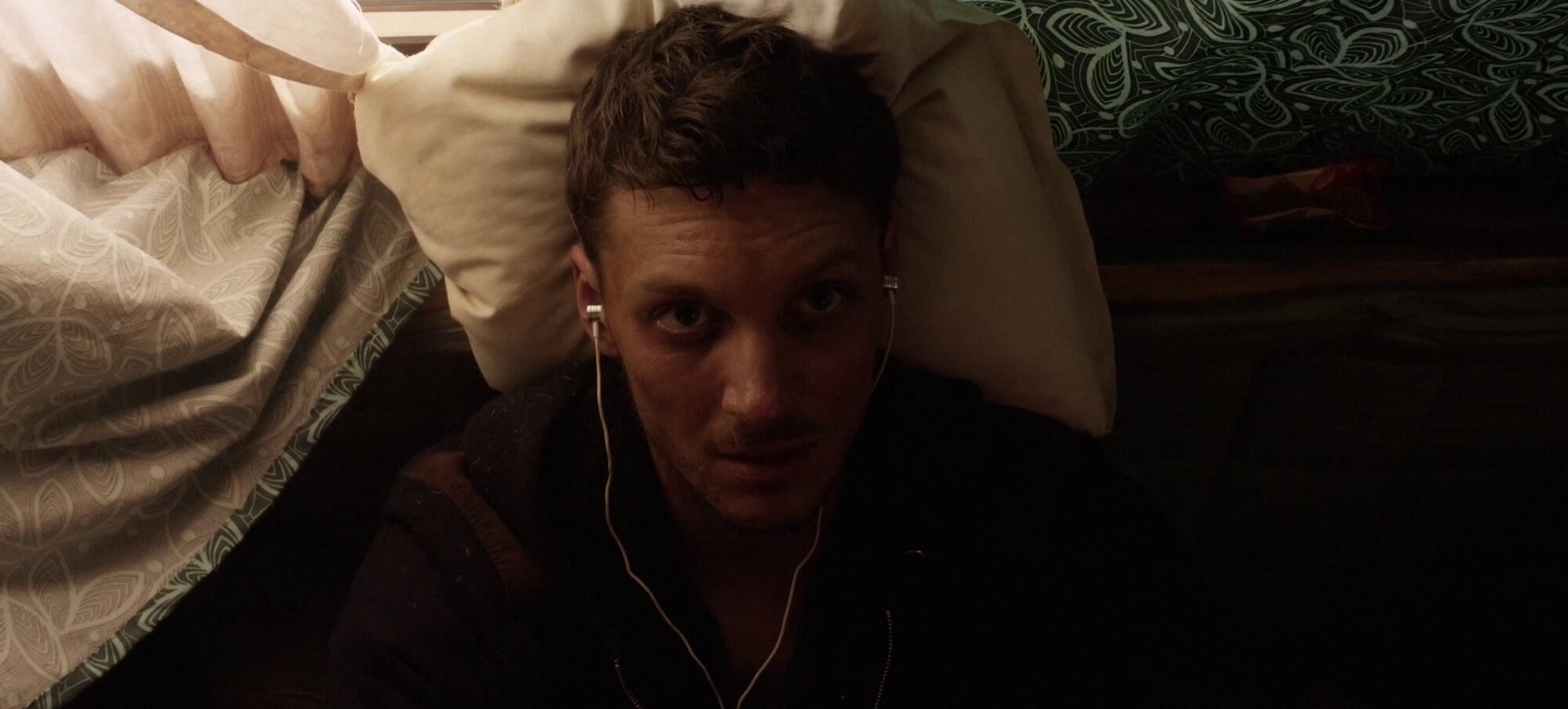
Silence is the key to survival in Alex Withers’ new end-of-the-world horror drama Dead Quiet. But what are the mental consequences to a world without sound? One which you have to be cautious about every move you make, living in fear that it may cost you your existence. Over a series of vignettes, Dead Quiet tells a story of a world collapsing into this scenario, leading us to Paul, our protagonist, who deals with his existential struggle as the last man alive. DN is excited to premiere Withers’ film online, alongside a deep dive with the director into crafting his vision of the apocalypse.
Where did the idea for a short film about the end of the world begin?
The Writer Dan McGrath first showed me the script back in 2015. We were sat exchanging scripts with each other for feedback and when we’d been through all of our other work, he remembered he’d had this one buried away in a folder for a couple of years. As soon as I read it, I knew I wanted to make it. It just had this very beautiful story at its core about human connection, its loss, and a big question about the state of our humanity when left with nobody else left to share it with. I loved the vignette structure, where we get to meet all of these very different characters who each live out the consequences of having a common human flaw.
How similar was that initial script to the one you shot with?
We occasionally went back to the script and made some changes, until we were finally ready to get the ball rolling in early 2017. A lot of that work was focussed on defining the rules of Dead Quiet’s world; what exactly it is that threatens our characters and what its limits are, how much we should actually show to the audience, things like that. By and large, the scenes and structure stayed the same from when I first read it to now.

How did you take Dead Quiet from a script to a fully funded short film?
Our first big task before putting the wheels in motion was finding a producer. Luckily a few of our team had worked with Emily Stubbs and so Dan, Emily and I ended up meeting about the film and really hit it off in terms of how we viewed the script. We then set up a Kickstarter campaign to raise the £10K budget and build a bit of buzz and an audience for Dead Quiet, which thankfully was a big success!
After that we finished assembling a crew. We were all based in the East Midlands and we managed to bring together a lot of great local talent to work on the film, which was one of the nicest things about the whole project. For casting, we put out a few open casting calls from which we received over 900 applications. Casting Director Shakyra Dowling also came on board to find our lead, Sam Wilkinson. That left one other key character to find: the caravan! I ended up buying it over the Facebook marketplace from my phone, while on another short film shoot in the middle of a field with very little signal. Production Designer Charlotte Ball then got to work, and with the help of a small team took this perfectly pristine caravan and turned it into the worn down survivalist bunker you see in the film.
I felt that our imagination when watching the film would be far more terrifying than anything we could show, so I was keen to keep things minimal and in-camera.
You worked with a variety of locations and casts, did that make for a more challenging shoot?
We shot principal photography over five days in Nottingham, which was a mix of location and studio shoots. We’d usually have one or two scenes per day with one or two characters, so for most of the shoot our cast didn’t get to meet each other. But then when we finally came to film the ending scene it was a great opportunity to bring everyone together and really play with the relationships between their characters. The strangest experience was probably felt by our lead, Sam, who spent almost the entire shoot boxed into a corner of the caravan and yet gave so much to every scene.



How did you work with your DoP Karl Poyzer to develop the visual language of the film?
The film was shot on an Arri Alexa with a set of Zeiss Standard Speeds. I wanted to create a sense of dreamlike continuity between scenes and so Karl and I decided to shoot the majority of the film on a Chapman/Leonard Cobra dolly to give us a wide range of motion so that we could create smooth, seamless movement throughout the film. The core lighting was built around a few HMIs and we did a lot of lighting control with flags, etc. to cast moving shadows when we wanted to signal the approach of the mysterious force that pursues our characters. In general, I felt that our imagination when watching the film would be far more terrifying than anything we could show, so I was keen to keep things minimal and in-camera.
One thing we didn’t get during principal photography was our establishing shots, so all of the empty exteriors of locations around the city and, most importantly, our caravan exteriors. Having shot everything else in August, we ended up trying to get our pickups the next February, got snowed off and then eventually returned to shoot in March. The crew at this point consisted purely of me, our DP, our standby art director and a hire van.
For the most part I just drove us around a bunch of spots in Nottingham for the day, jumping out at key locations to set up camera, waiting for a moment with nobody in shot and then heading off to the next place. For the caravan, Location Manager Dan Hodgett suggested we go to this beautiful old railway viaduct just around the corner from where he grew up. Thanks to the Friends of Bennerley Viaduct who look after the site we were able to get in and so we ended up with the most incredible backdrop.


How was it putting the film together in post? So much of the world building in Dead Quiet comes from sound.
Post-production was the longest part of the process for us. Our edit went really smoothly, and since I lived with our Editor Simon Dymond it was a lovely process where we could form a really close collaboration. Plus he’s super fast, so we could try out changes really quickly and put the focus purely on the creative side of things.
Unfortunately, our initial plans for the sound mix fell through so with the sound of Dead Quiet being the most important part it took another 6 months before we found the amazing 5A Studios in London. They understood the film immediately and it was a real joy after the years since reading the script, getting to hear what the film would really sound like. The grade was done at Halo Post by Paul Koren and Notts-based VFX artist Dom Stables finished it all off.
We get to meet all of these very different characters who each live out the consequences of having a common human flaw.
Despite the script pre-dating A Quiet Place, have the comparisons tainted reactions, responses or Q&As?
When your small film draws comparisons with something as big as A Quiet Place, there’s definitely a certain level of worry of course that it will be overshadowed, or that people will assume the bigger film came first and judge it on that idea alone. I’ve often felt the urge to explain everything to people before they see Dead Quiet, which I think can happen with any film in one way or another, but at a certain point you have to be able to let go of that and let people judge for themselves.
The biggest impact might actually be on us as filmmakers; to this day, I still can’t bring myself to watch A Quiet Place! Which is a shame, because how often do you get a chance to see how some top Hollywood talent on a multimillion budget would handle the same material as you? As it turns out, people have mostly appreciated the film on its own merits and seem to always go back to the themes and characters that resonated with them as an audience, which has been so lovely to hear.

It was disappointing when A Quiet Place was announced, especially because before then Dan and I had always talked about doing a feature version of the Dead Quiet story. But as a short film I think it really stands apart in the unique things it has to say about human nature and the relationships we so often take for granted, and I hope that’s what other people see in it too.
What projects will you be bringing to fruition next?
I’ve reached that point in life where I’ve begun to think about directing my first feature-length film. So, while I’m hoping to make a few more shorts first, I’ve been putting my mind to the task of sifting through some ideas for something bigger. The bizarreness of 2020 has given me a great opportunity to put pen to paper and write and develop a bunch of short film scripts, so you could say I’m spinning a few plates in the meantime.
As much as I didn’t expect to follow up Dead Quiet with another horror film, I’m now developing a short horror/comedy that doubles up as a satire about single-use plastics. Aside from that, there’s a thriller set in the 1890s Yukon Gold Rush, a comedy of errors about a case of mistaken identity and a dramedy about relationships with a supernatural twist. So fingers crossed there’s a lot more work to come!


